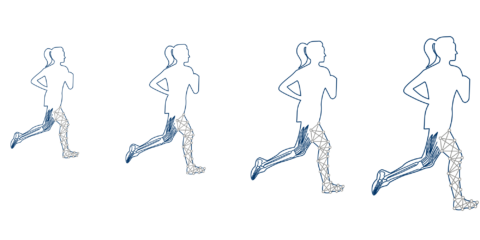The BioMAC Group joins the ASM Chair
The Biomechanical Motion Analysis and Creation (BioMAC) group has officially joined the chair of Autonomous Systems and Mechatronics, starting from February 1st. The BioMAC group is lead by Prof. Dr. Anne Koelewijn and aims to develop methods for accurate analysis and simulation of human motion, with a focus on gait. Central to this research is the notion that humans and other animals plan and execute movements to be as energy efficient as possible. By converting this energy minimization to a computer optimization, we can simulate human movement based on optimal control Specifically, we use this approach to process inaccurate or incomplete experimental data and to predict the effect of interventions, such as a prosthesis or an exoskeleton. The BioMAC group currently has six doctoral researchers who work on projects around human movement that are centred around three core topics.
Markus Gambietz and Namra Rauf investigate the personalization of biomechanical models and simulations. Such personalization is important to be able to understand individual movement differences and could enable personalized design of prostheses and exoskeletons. Their research is supported by the collaborative research centre EmpkinS (Markus Gambietz) and Siemens Healthineers (Namra Rauf)
Alexander Weiss, Chuyi Wang, and Maria Eleni Athanasiadou are developing approaches to measure sports movements outside of the laboratory, with a focus on big wave surfing (Alexander Weiss), running (Chuyi Wang) and football/soccer (Maria Eleni Athanasiadou). The main focus is to make accurate biomechanical reconstructions based on inertial sensor data, while they also make use of other sensors when appropriate. Their research is supported by Siemens Healthineers (Alexander Weiss), adidas (Chuyi Wang), and the German Research Foundation (Maria Eleni Athanasiadou).
Sophie Fleischmann remains in the Machine Learning and Data Analytics lab, where she researches models of neural control, both using machine learning and neuromechanics. Here, the goal is to better understand how a disease in or damage to the central nervous system affects movement. Such understanding can help us develop better supporting devices or medication to improve their mobility. Her research is also supported by the collaborative research centre EmpkinS.
